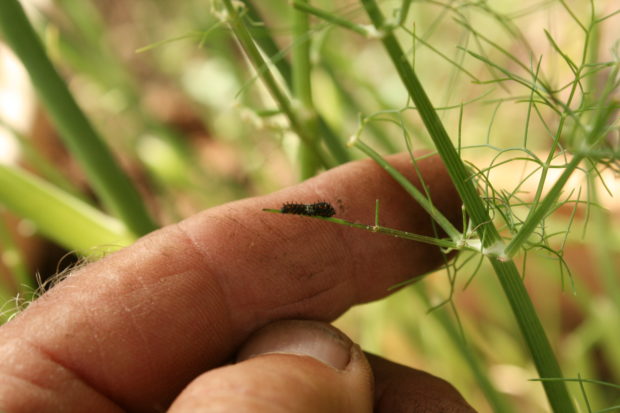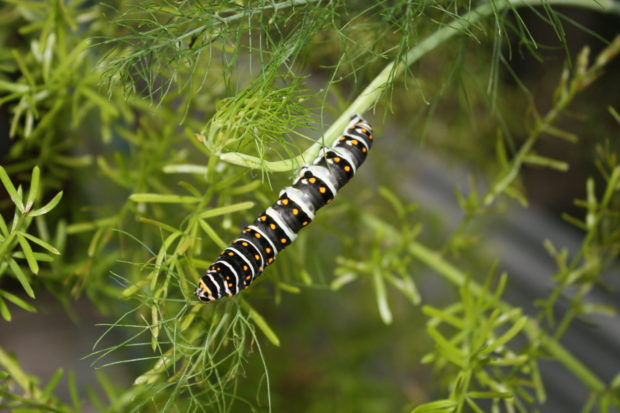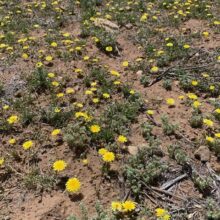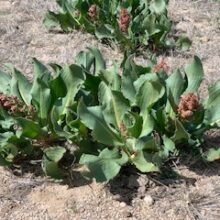
The scientific name of the black swallowtail is Papilio polyxenes. Papilio is from the Latin for butterfly and the specific epithet polyxenes is from two Greek words and I think it means many guests. I could be wrong, but I liked my translation, because it made me think of all the larvae I would see on one fennel plant and that looked like many guests to me.
If you want to attract black swallowtail butterflies to your personal habitat in southeastern Arizona, and of course you do, simply plant some plants in the parsley family Apiaceae and I guarantee that a female black swallowtail will find your parsley or dill, lay her eggs and before you know it, you will find tiny crawling bird poops eating your parsley and dill (see photo). At our house they were on fennel (Foeniculum vulgare).

Some plants in the rue family, Rutaceae, are also larval food for black swallowtails. See if you can find a nursery that grows Thamnosa. Two species of these plants in the family are found in Arizona. Near me in Cochise County you can find Thamnosa texana on the dry rocky slopes of the Dragoons and the Mules. If you’re wandering those slopes you’ll probably see a black swallowtail or two as well.
The photos are mine. The chrysalis is attached to a brickell bush stem and the caterpillars both tiny and big, are eating our fennel. Pretty cute.






